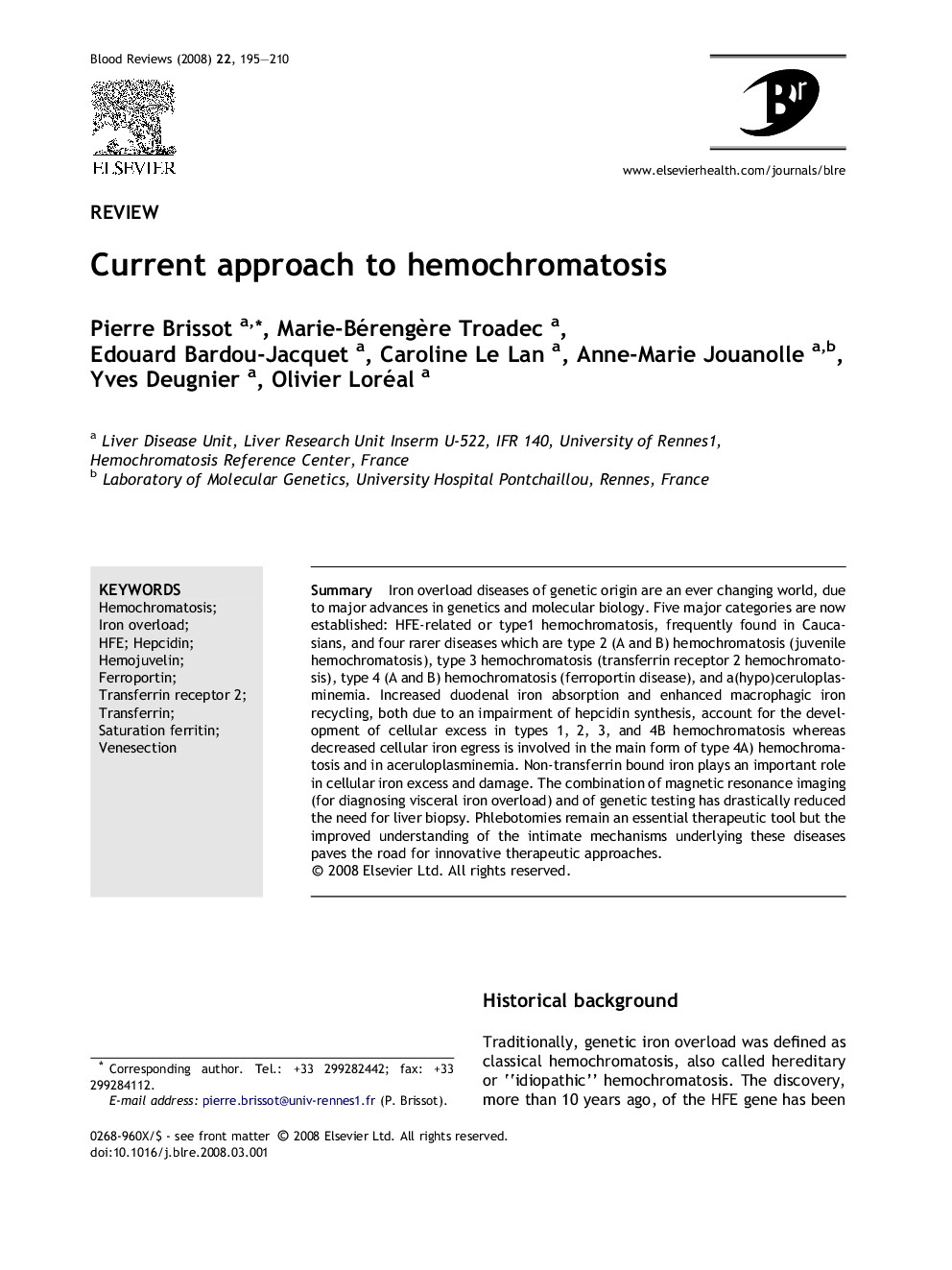| Article ID | Journal | Published Year | Pages | File Type |
|---|---|---|---|---|
| 2106302 | Blood Reviews | 2008 | 16 Pages |
SummaryIron overload diseases of genetic origin are an ever changing world, due to major advances in genetics and molecular biology. Five major categories are now established: HFE-related or type1 hemochromatosis, frequently found in Caucasians, and four rarer diseases which are type 2 (A and B) hemochromatosis (juvenile hemochromatosis), type 3 hemochromatosis (transferrin receptor 2 hemochromatosis), type 4 (A and B) hemochromatosis (ferroportin disease), and a(hypo)ceruloplasminemia. Increased duodenal iron absorption and enhanced macrophagic iron recycling, both due to an impairment of hepcidin synthesis, account for the development of cellular excess in types 1, 2, 3, and 4B hemochromatosis whereas decreased cellular iron egress is involved in the main form of type 4A) hemochromatosis and in aceruloplasminemia. Non-transferrin bound iron plays an important role in cellular iron excess and damage. The combination of magnetic resonance imaging (for diagnosing visceral iron overload) and of genetic testing has drastically reduced the need for liver biopsy. Phlebotomies remain an essential therapeutic tool but the improved understanding of the intimate mechanisms underlying these diseases paves the road for innovative therapeutic approaches.
